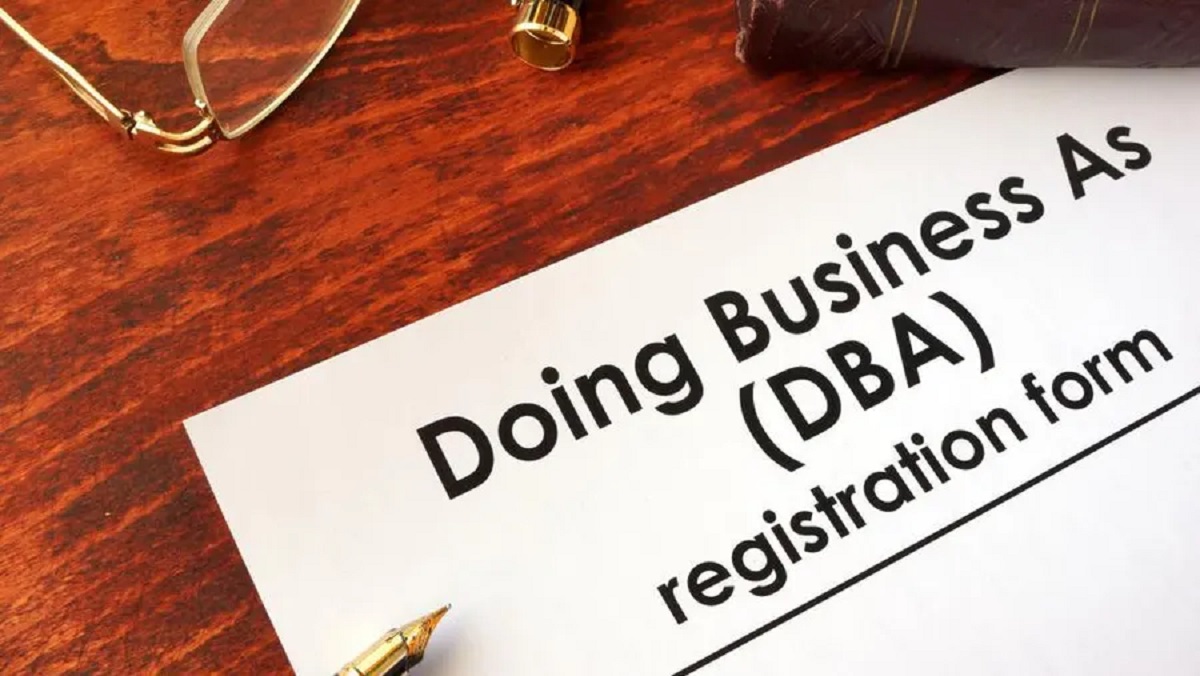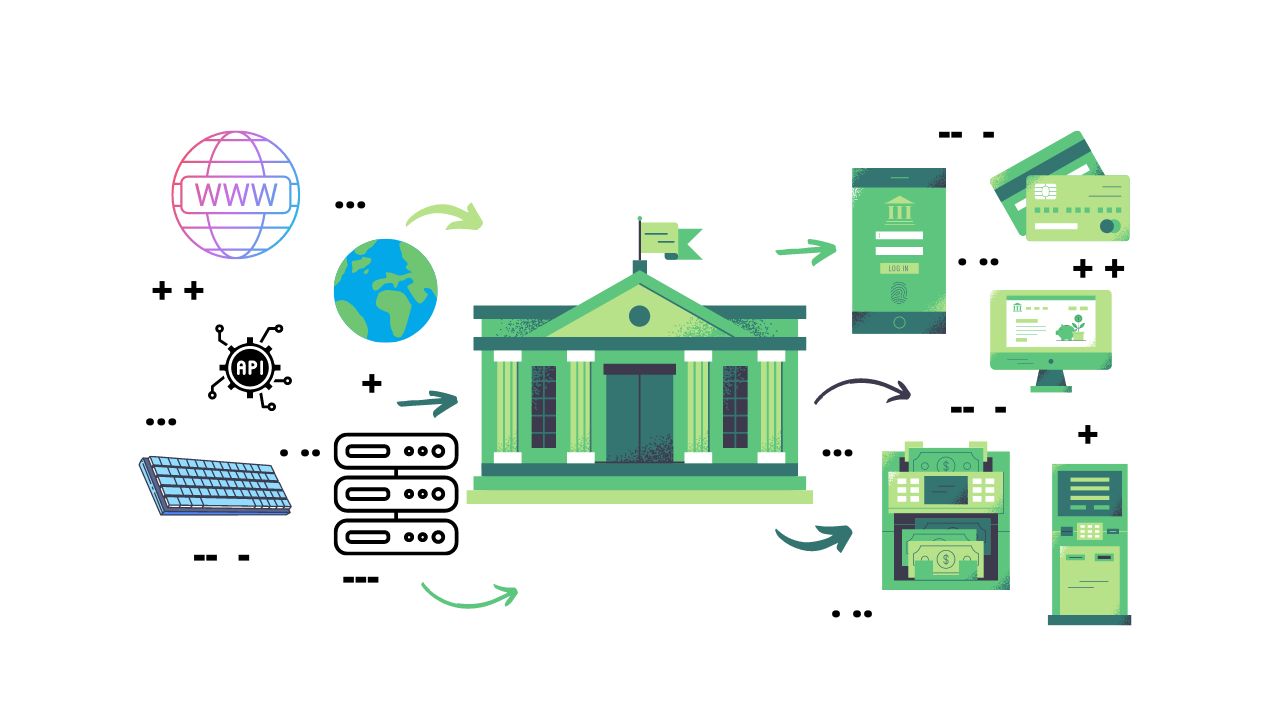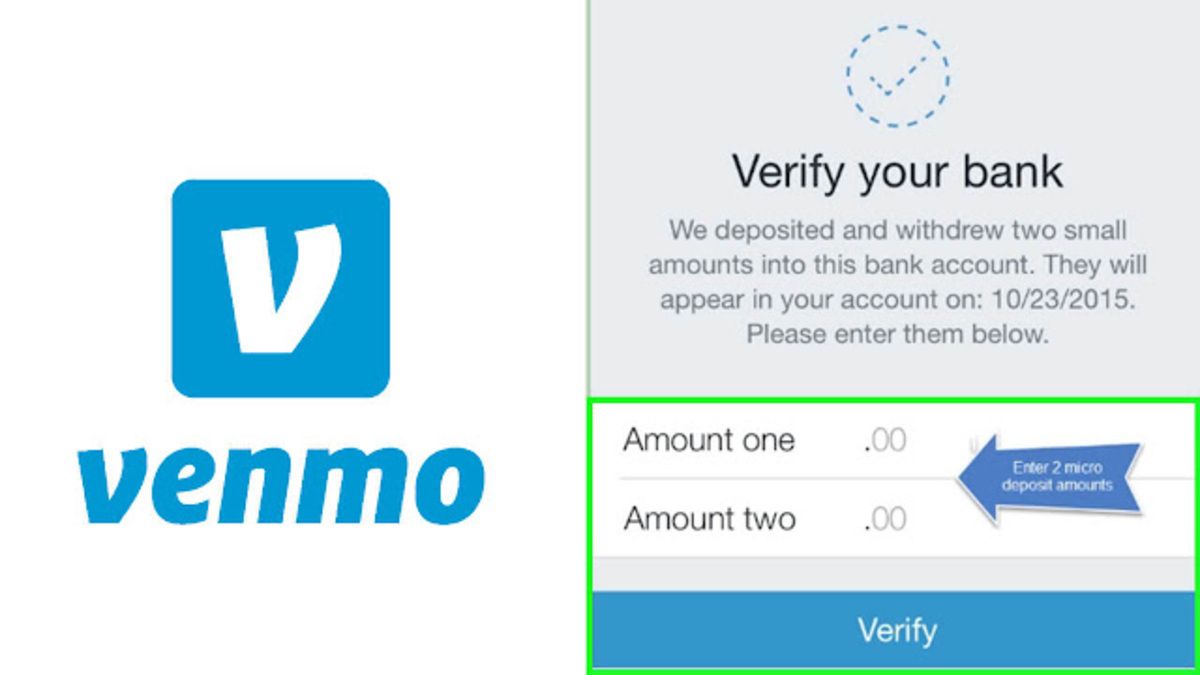Introduction
Welcome to the world of business ownership! As you embark on your entrepreneurial journey, it’s essential to set up a solid financial foundation for your new venture. One crucial aspect of this foundation is opening a business banking account. In this article, we will guide you through the process of opening a business banking account and provide tips on how to effectively manage it.
Starting a business is an exciting and challenging endeavor. As a business owner, you need to separate your personal finances from your business finances. This separation not only makes accounting and tax preparation easier but also provides a more professional image for your business. A dedicated business banking account allows you to keep track of your business’s income and expenses, manage cash flow efficiently, and access a range of banking services tailored to meet the needs of businesses.
Having a business banking account brings numerous benefits and advantages. It allows you to accept payments from customers and clients using different payment methods, such as checks, credit cards, and electronic transfers. It also enables you to make payments to suppliers and vendors, pay your employees, and manage payroll with ease. Furthermore, having a business bank account can help you establish a credit history for your business, which may be vital for future financing needs.
Now that you understand the importance of having a business banking account, let’s delve into the steps involved in opening one. We will cover everything from choosing the right bank for your business to the documents and information you need to gather. We’ll also provide insights into what to expect during the account opening process and how to effectively manage your business banking account once it’s up and running. By following this guide, you’ll be well-equipped to navigate the world of business banking and ensure the financial success of your venture.
Why do you need a business banking account?
As a business owner, having a dedicated business banking account is essential for several reasons.
First and foremost, separating your personal and business finances is crucial for maintaining accurate financial records. By keeping your personal and business transactions separate, you’ll have a clear overview of your business’s financial health, making it easier to track income, expenses, and profits. This separation also simplifies tax preparation, reducing the risk of errors and ensuring compliance with tax regulations.
A business banking account also provides a more professional image for your company. It shows potential customers, clients, and partners that you are serious about your business and have structured financial processes in place. When conducting business, you can provide clients with professional invoices and accept payments through your business bank account, which enhances credibility and trust.
In addition to professionalism, a business banking account offers a range of banking services tailored to meet the needs of businesses. You’ll have access to merchant services, allowing you to accept credit card payments and online transactions. You can also set up automated bill payments and direct deposits, making it convenient for customers, employees, and suppliers to transact with your business. Additionally, many banks offer business-specific services like business loans, lines of credit, and business credit cards that can help with financing and managing cash flow.
Having a business banking account is also important for legal and liability purposes. When your business operates under a separate legal entity, such as a limited liability company (LLC) or a corporation, it’s crucial to maintain separation between personal and business finances. By commingling personal and business funds, there is a risk of losing the liability protection offered by your business structure. Having a dedicated business bank account helps maintain this separation, protecting your personal assets in case of legal or financial issues.
Lastly, as your business grows, a business banking account allows for better scalability and organization. With separate accounts, you can easily track and manage various aspects of your business, such as payroll, expenses, and income streams. This organization is crucial for making informed financial decisions and planning for future growth.
In summary, a business banking account is essential for separating personal and business finances, establishing a professional image, accessing business-specific banking services, complying with legal requirements, and ensuring scalability and organization. By opening a business banking account, you set your business up for success and pave the way for efficient financial management.
Choosing the right bank for your business
When it comes to opening a business banking account, choosing the right bank is crucial. The bank you select will become a long-term partner in managing your business’s financial needs. Here are some key considerations to keep in mind when choosing the right bank for your business:
1. Business Banking Services: Look for a bank that offers a comprehensive range of business banking services. This includes features such as online banking, mobile banking, bill payment, remote deposit capture, and robust reporting capabilities. Consider whether the bank provides merchant services, loans, lines of credit, and business credit cards if you anticipate needing these services in the future.
2. Account Fees and Charges: Compare the fee structures of different banks. Look for banks that offer low or no maintenance fees, ATM fee reimbursements, and free business transactions. Consider the number of free transactions and the charges for additional transactions. Be cautious of hidden fees that may eat into your business’s profits.
3. Accessibility and Convenience: Consider the bank’s branch and ATM network. Evaluate whether the bank has convenient locations and operating hours that align with your business’s needs. Additionally, look for banks that provide a robust online and mobile banking experience, allowing you to conveniently manage your business finances from anywhere at any time.
4. Business Support: Research whether the bank offers dedicated support for businesses. This could include access to a dedicated relationship manager who can provide personalized advice and assistance. Consider the bank’s reputation for customer service and responsiveness to business customers.
5. Security and Technology: Verify the bank’s security measures to protect your business’s financial information and transactions. Look for banks that offer multi-factor authentication, encryption, and other security features. Ensure that the bank’s technology infrastructure is reliable and can support the evolving needs of your business.
6. Reputation and Stability: Consider the bank’s reputation and financial stability. Look for banks that have a strong track record, positive customer reviews, and a solid standing in the banking industry. Stability is important to ensure that the bank will be a reliable partner for your business’s long-term financial needs.
Take the time to research and compare the offerings of different banks. Consider reaching out to business owners in your industry for recommendations and insights. Once you have a shortlist of potential banks, schedule appointments or consultations to discuss your business’s specific needs and evaluate the bank’s suitability. By choosing the right bank, you’ll set the foundation for a successful banking relationship that can support your business’s growth and financial stability.
Gather the necessary documents and information
Before opening a business banking account, it’s important to gather the necessary documents and information to streamline the account opening process. While the specific requirements may vary depending on the bank and your business’s legal structure, here are some common documents and information you’ll typically need:
1. Business Formation Documents: You’ll generally need to provide proof of your business’s legal formation. This may include documents such as your Articles of Incorporation or Organization, Partnership Agreement, or DBA (Doing Business As) Certificate. These documents verify the existence and legal structure of your business.
2. Employer Identification Number (EIN): If your business is required to have an EIN, you’ll need to provide this when opening a business banking account. An EIN is a unique taxpayer identification number assigned by the IRS and is necessary for businesses with employees or certain legal structures.
3. Identification Documents: As the business owner, you’ll need to provide identification documents such as your driver’s license or passport. Additionally, if you have partners or authorized signers on the account, they’ll need to provide their identification documents as well.
4. Business Licenses and Permits: If your business requires specific licenses or permits to operate legally, you may need to provide copies of these documents. This could include professional licenses, health permits, or industry-specific licenses.
5. Business Address Verification: Banks typically require proof of your business address. This can be done through a lease agreement, utility bill, or other official documentation that shows your business’s physical address.
6. Business Financial Information: Some banks may request financial information about your business, such as previous tax returns, financial statements, or proof of revenue. This helps the bank assess your business’s financial position and evaluate potential risk.
7. Personal Financial Information: As the business owner, you may also need to provide personal financial information, including bank statements, tax returns, and a personal financial statement. This is to verify your financial status and assess your ability to manage the business’s finances.
It’s essential to contact the bank ahead of time to inquire about the specific documents and information they require. This will ensure that you gather all the necessary paperwork and can complete the account opening process smoothly.
Keep in mind that some banks may have additional requirements or documentation based on their internal policies or the type of business you operate. By being well-prepared with the necessary documents and information, you’ll expedite the account opening process and be one step closer to accessing the benefits of a dedicated business banking account.
Schedule an appointment with the bank
Once you’ve gathered all the necessary documents and information, the next step in opening a business banking account is to schedule an appointment with the bank. While some banks may allow you to start the application online or over the phone, it’s often beneficial to meet with a representative in person to ensure a smooth and efficient account opening process. Here are some key steps to keep in mind:
1. Research the Bank’s Appointment Process: Before scheduling an appointment, familiarize yourself with the bank’s appointment process. Visit their website or give them a call to gather information about their availability, preferred method of scheduling appointments, and any specific requirements related to account opening.
2. Select a Convenient Time and Location: Determine a time and location that works best for both you and the bank representative. Consider your own schedule and availability, as well as the bank’s operating hours and branch location. Choose a branch that is convenient for you to visit for future needs as well.
3. Be Prepared with Documents and Information: Prior to the meeting, double-check that you have all the required documents and information ready to bring with you. This includes business formation documents, identification documents, EIN, business licenses, personal financial information, and any other paperwork requested by the bank.
4. Clarify Expectations and Requirements: When scheduling the appointment, inquire about any specific requirements or expectations from the bank. This could include a minimum deposit amount, certain account features, or additional paperwork that may be needed. Understanding these requirements ahead of time will ensure a smoother experience.
5. Allow Time for the Meeting: Schedule a sufficient amount of time for the appointment to ensure that all necessary paperwork is completed and questions are addressed. This will save you from rushing through the process and allow you to fully understand the terms and conditions of the account.
6. Prepare Questions: Take the opportunity to prepare any questions you may have about the account features, fees, online banking capabilities, or any other concerns you may want to clarify with the bank representative. Being well-prepared will help you make an informed decision about which bank is the best fit for your business.
7. Arrive Early and Dress Professionally: It’s important to arrive at the appointment on time or even a few minutes early. This shows respect for the bank’s time and professionalism on your part. Dressing appropriately and professionally also contributes to making a positive impression.
By following these steps and scheduling an appointment with the bank, you ensure a dedicated time to discuss your business’s unique needs and complete the necessary paperwork. This personalized approach allows the bank representative to guide you through the process and address any questions or concerns you may have. Taking the time to schedule and attend an appointment demonstrates your commitment to managing your business’s finances responsibly and sets the stage for a successful banking relationship.
What to expect during the account opening process
When opening a business banking account, it’s helpful to know what to expect during the process. While the specifics may vary based on the bank and your business’s unique circumstances, here are some general steps you can anticipate:
1. Account Application: The bank representative will guide you through the account application process. This may involve filling out paperwork, providing identification documents, and supplying the necessary business formation documents, EIN, and other required information.
2. Account Types and Features: The bank representative will discuss the various account types available and help you choose the one that best suits your business’s needs. They will also explain the features and benefits of each account option.
3. Funding the Account: To open the account, you’ll need to make an initial deposit. The representative will inform you of the required minimum deposit and options for funding the account, such as a check or a wire transfer.
4. Account Setup: The bank representative will set up your account and provide you with the necessary account information, including the account number and any associated debit or deposit cards. They will also explain how to access and use online banking services, if applicable.
5. Terms and Conditions: The representative will go over the terms and conditions of the account, including any fees, transaction limits, or additional services you may have requested. It’s important to carefully review and understand these terms before proceeding.
6. Signing Agreements: You may be required to sign various agreements, authorizations, or disclosures related to your business banking account. Read these documents thoroughly and ask questions if anything is unclear.
7. Additional Services and Support: If you need additional banking services, such as a business credit card or merchant services, the representative may discuss these options and assist you in applying for them.
8. Account Verification and Review: The bank may perform identity verification and credit checks as part of the account opening process. They may also review the information you provided to ensure accuracy and compliance.
9. Account Activation: Once all the necessary steps are completed, your business banking account will be activated. You can start using the account to make deposits, withdrawals, and perform various financial transactions for your business.
10. Welcome Package and Materials: The bank may provide you with a welcome package that includes important account information, account statements, contact details for customer support, and any additional materials or resources to help you manage your business banking account effectively.
Throughout the account opening process, feel free to ask questions and seek clarification on any aspects that you find confusing or ambiguous. The bank representative is there to assist you and ensure that you have a clear understanding of the account and its features.
Keep in mind that the account opening process may take some time, depending on the complexity of your business and the bank’s internal procedures. By knowing what to expect, you can be prepared and make the most of the appointment with the bank representative.
Set up online banking and additional services
After opening your business banking account, it’s important to take advantage of online banking and explore additional services offered by the bank. These tools and services can streamline your financial management and help you stay on top of your business’s transactions. Here are some key steps to set up online banking and explore additional services:
1. Online Banking Registration: Contact your bank or visit their website to register for online banking. This typically involves creating a username and password to access your account securely online. Set up any additional security measures, such as two-factor authentication, to protect your account.
2. Account Integration: Once registered for online banking, you can link your business banking account to accounting software or bookkeeping tools that you use for your business. This integration allows for seamless and accurate tracking of your financial transactions.
3. Bill Pay: Take advantage of the bill pay feature offered by the bank. This allows you to set up and manage recurring payments for regular expenses, such as rent, utilities, and vendor payments. Automating bill payments saves you time and reduces the likelihood of missing due dates.
4. Mobile Banking: Download your bank’s mobile banking app and set it up on your smartphone or tablet. This enables you to access your business banking account on the go, check balances, view transactions, and make transfers or payments remotely.
5. Alerts and Notifications: Set up alerts and notifications through your online banking account. These can include balance alerts, transaction alerts, low balance warnings, or suspicious activity notifications. Customizing these alerts helps you stay informed about the financial activity of your business.
6. Merchant Services: If your business accepts credit card or online payments, explore the bank’s merchant services. This can help you set up and manage card processing systems, online payment gateways, and other tools to facilitate smooth payment transactions with your customers.
7. Business Credit Card: Consider applying for a business credit card through your bank. This provides you with a separate line of credit for business expenses and helps you build credit history for your business. It can also provide additional benefits such as rewards programs or cashback offers.
8. Business Loans or Lines of Credit: If you anticipate needing financing for your business, inquire about the bank’s loan or line of credit options. Banks often offer competitive rates and terms for business customers, and having a relationship with them may make the process of obtaining financing easier in the future.
9. Financial Education and Support: Take advantage of any financial education resources or support offered by the bank. Many banks provide workshops, webinars, or online resources that can help you improve your financial literacy and better manage your business’s finances.
Remember to regularly review and reconcile your business banking transactions to ensure accuracy and detect any discrepancies or potential fraud. Utilizing the online banking tools and additional services available to you can significantly enhance your financial management capabilities and save you time and effort in the long run.
Understanding the fees and charges
When managing your business banking account, it’s essential to understand the fees and charges associated with it. Banks may impose various fees for different services and transactions, and being aware of these fees helps you make informed financial decisions and avoid unnecessary expenses. Here are some common fees and charges to be aware of:
1. Monthly Maintenance Fee: Many banks charge a monthly maintenance fee for business banking accounts. This fee covers the bank’s cost of maintaining the account and providing access to banking services. It’s important to understand the amount of the fee and whether there are any conditions that can waive or reduce it, such as maintaining a minimum account balance.
2. Transaction Fees: Banks may charge fees for certain types of transactions, such as withdrawing cash or making deposits beyond a certain limit. It’s crucial to know the transaction fees associated with your business banking account and factor them into your cash flow management. Consider if there are alternative ways to conduct transactions that may have lower or no fees, such as electronic transfers or mobile check deposits.
3. ATM Fees: If you use ATMs outside of your bank’s network, you may incur ATM fees. These fees typically apply when you withdraw cash or check your account balance at ATMs not affiliated with your bank. Some banks may reimburse a certain number of ATM fees each month or offer fee-free access to a wide network of ATMs.
4. Overdraft Fees: Exceeding your account balance can lead to costly overdraft fees. Understand the bank’s policy on overdraft fees, including the amount charged per occurrence and any daily maximum limits. It’s crucial to closely monitor your account balance and consider setting up overdraft protection or linked savings accounts to avoid these fees.
5. Wire Transfer and ACH Fees: Banks may charge fees for outgoing wire transfers or Automated Clearing House (ACH) transactions. These fees can vary depending on whether the transfer is domestic or international and the speed of the transaction. If your business frequently sends or receives wire transfers or ACH payments, it’s important to know the associated fees.
6. Check Printing Fees: If your business uses checks, there may be fees for check printing and reordering. The specific fees can vary depending on the design, quantity, and customization options. Consider if there are alternatives, such as electronic payments or online bill pay, that can help reduce or eliminate the need for checks.
7. Additional Service Fees: Banks may have fees for additional services such as stop payments, account research, or statement requests. It’s important to review the bank’s fee schedule or contact a representative to understand the cost of these services and assess whether they are necessary for your business’s banking needs.
When evaluating the fees and charges associated with your business banking account, consider the value and convenience provided by the bank’s services. Compare the fees and charges of different banks to ensure you choose an institution that offers competitive pricing and aligns with your business’s financial goals.
Remember to review your account statements regularly and monitor for any unexpected or unauthorized charges. By understanding the fees and charges of your business banking account, you can effectively manage your finances, minimize expenses, and maximize the value of the services provided by your bank.
Managing your business banking account effectively
Once you have opened a business banking account, it’s important to implement effective management practices to ensure the smooth operation of your account and maximize its benefits. Here are some tips to help you manage your business banking account effectively:
1. Regularly Review Your Account: Set aside time each week or month to review your account activity. Check for any errors or discrepancies and reconcile your transactions with your accounting records. This helps you maintain accurate financial records and identify any potential issues promptly.
2. Monitor Your Account Balance: Keep a close eye on your account balance to ensure you have sufficient funds for your business transactions. Avoid overdrawing your account to prevent costly fees. Use online banking or mobile banking to check your balance regularly and set up balance alerts to stay informed of any significant changes.
3. Maintain a Cash Flow Buffer: Set aside a cash flow buffer in your business banking account to cover unexpected expenses or temporary fluctuations. This ensures you have funds available when needed and helps prevent cash flow issues that may impact your business’s operations.
4. Automate and Streamline Payments: Take advantage of online bill pay and automated payment features provided by your bank. Schedule recurring payments for regular expenses and set up automatic transfers for savings or loan repayments. This saves time and reduces the risk of missing payment due dates.
5. Review and Negotiate Fees: Periodically review the fees associated with your business banking account. If you find that you’re incurring excessive fees, consider discussing them with your bank representative. They may be able to provide solutions or recommend alternative account options with lower fees based on your business’s needs.
6. Keep Your Information Updated: Inform your bank of any changes to your business’s contact information, authorized signers, or any other relevant details. This ensures that you receive important communications from the bank and maintains the accuracy of your account information.
7. Back up Important Documents: Make sure to keep copies of all account-related documents, including account agreements, statements, and correspondence with the bank. Consider storing electronic copies in a secure location, such as cloud storage, to prevent loss or damage to critical financial information.
8. Communicate with Your Bank: Maintain open lines of communication with your bank. If you have any questions, concerns, or need assistance, don’t hesitate to reach out to your bank’s customer service or business banking representative. They can provide guidance, address your concerns, and help you make the most of your business banking account.
9. Evaluate Your Banking Relationship: Regularly assess your business banking needs and the level of service provided by your bank. Consider if your current bank is meeting your expectations and needs as your business grows. If necessary, explore other banking options or discuss your evolving needs with your bank representative.
By implementing these practices, you can effectively manage your business banking account and optimize its benefits for your business. Regular monitoring, proactive cash flow management, and effective communication with your bank will contribute to the success and financial stability of your business.
Conclusion
Opening and effectively managing a business banking account is a critical step in establishing a strong financial foundation for your business. By separating your personal and business finances, you can track your income and expenses more accurately, access specialized banking services, and project a professional image to your customers and partners.
Throughout this article, we have discussed the importance of having a business banking account and provided guidance on various aspects of the account opening process. We explored the reasons why a business banking account is necessary, including the separation of finances, professional image, access to specialized services, and legal protection.
We also covered key steps in the account opening process, such as choosing the right bank, gathering the necessary documents, scheduling an appointment, and understanding what to expect during the process. Additionally, we highlighted the importance of setting up online banking, exploring additional services, understanding the fees and charges, and managing the account effectively.
By following the tips and information provided in this article, you can navigate the process of opening a business banking account with confidence and set your business up for financial success. Remember to regularly review your account, monitor your balance, automate payments, and communicate effectively with your bank.
Lastly, as your business evolves, periodically reassess your banking needs and explore if your current bank aligns with your business’s growth plans. By maintaining a strong relationship with your bank and utilizing the services they offer, you can effectively manage your business’s finances and ensure its long-term prosperity.

























